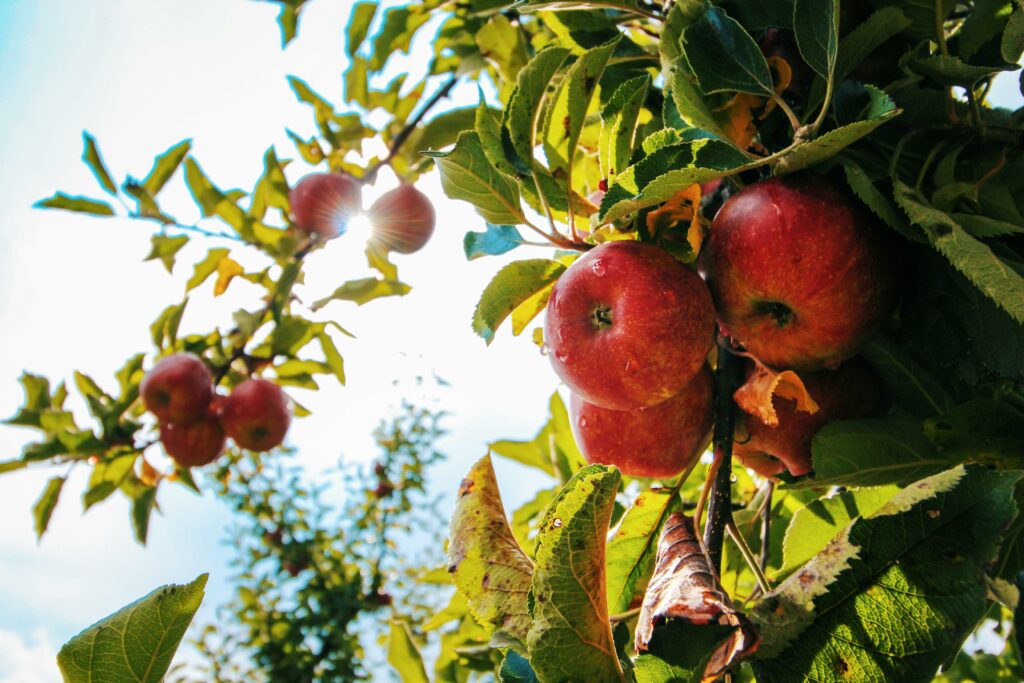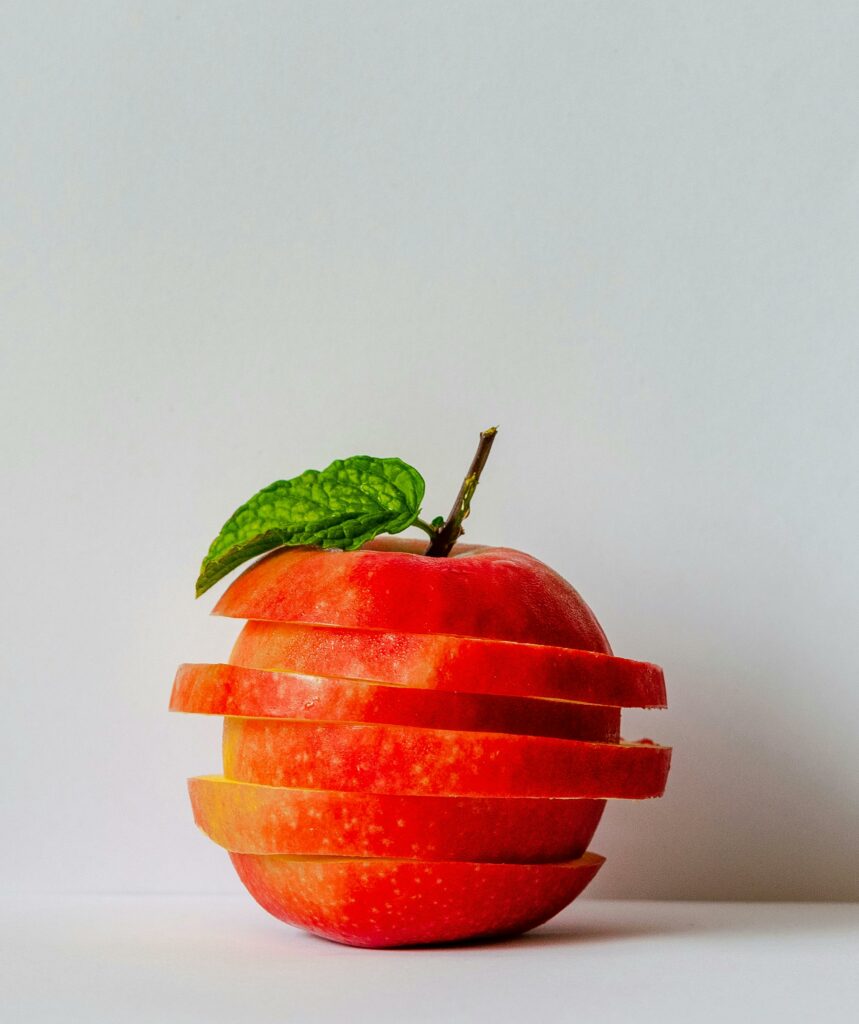Falling for Apples
go.ncsu.edu/readext?1029975
en Español / em Português
El inglés es el idioma de control de esta página. En la medida en que haya algún conflicto entre la traducción al inglés y la traducción, el inglés prevalece.
Al hacer clic en el enlace de traducción se activa un servicio de traducción gratuito para convertir la página al español. Al igual que con cualquier traducción por Internet, la conversión no es sensible al contexto y puede que no traduzca el texto en su significado original. NC State Extension no garantiza la exactitud del texto traducido. Por favor, tenga en cuenta que algunas aplicaciones y/o servicios pueden no funcionar como se espera cuando se traducen.
Português
Inglês é o idioma de controle desta página. Na medida que haja algum conflito entre o texto original em Inglês e a tradução, o Inglês prevalece.
Ao clicar no link de tradução, um serviço gratuito de tradução será ativado para converter a página para o Português. Como em qualquer tradução pela internet, a conversão não é sensivel ao contexto e pode não ocorrer a tradução para o significado orginal. O serviço de Extensão da Carolina do Norte (NC State Extension) não garante a exatidão do texto traduzido. Por favor, observe que algumas funções ou serviços podem não funcionar como esperado após a tradução.
English
English is the controlling language of this page. To the extent there is any conflict between the English text and the translation, English controls.
Clicking on the translation link activates a free translation service to convert the page to Spanish. As with any Internet translation, the conversion is not context-sensitive and may not translate the text to its original meaning. NC State Extension does not guarantee the accuracy of the translated text. Please note that some applications and/or services may not function as expected when translated.
Collapse ▲We’re seeing the early signs of fall with the changes in leaf color and breaks from the summer heat. That means one thing – apple harvest season. Apples have become such a symbol of fall that the entire month of October is deemed National Apple Month! Originally this celebration was founded as National Apple Week in 1904 before it expanded into the entire month of October.
We can celebrate apples by crunching into fresh apples, cooking up apple recipes, and enjoying apple themed activities. Here in Randolph County there are many ways to celebrate this fall fruit and local agriculture including apple picking, visiting a local orchard, and trying local apple cider products.

Apple Facts:
- There is so much variety when it comes to apple color and flavor. You can find these fruits in green, yellow, or red. The different levels of sugars and organic acids create unique flavors from tart to sweet that you can enjoy fresh or in recipes.
- Eating the apple with the peel provides more fiber, vitamins, minerals, and nutrients than without.
- Apple peels are rich in beneficial phytonutrients like quercitin, catechin, phloridzin and chlorogenic acid.
- The first apple pie recipe recorded dates back to 1381 in England. The early recipes didn’t include sugar and used a crust called “coffin pastry.”
- While apples were not native to North Carolina, they have been recorded to be grown in N.C. since the 1600-1700s when settlers started them from seed they brought with them.
- Toss your sliced apples in lemon juice, orange juice, or pineapple juice to prevent them from turning brown. The acids present in these juices stop the enzymes that cause browning.
Food Safety:
Pick high quality apples that are free of bruises and blemishes. Food safety doesn’t end when you get home! Be sure to wash your apples well with cool running water before you cut, peel, or eat them. Do not use detergents and soaps to wash your apples as they can leave a residue that is not safe to consume.
See the video below to hear the safest way to wash produce according to Ben Chapman at N.C. State University.
The Safest Way to Wash Produce .
Recipes to Try:
Looking for ways to use apples at home? Try the recipes below using a variety of apples.
Apple Nachos
Ingredients:
- 4 medium apples (use a variety of tart and sweet apples of your choice)
- ¾ cup Natural peanut butter
- Mini chocolate chips
- Shredded unsweetened coconut
Directions:
- Wash hands thoroughly with soap and water. Wash apples well under cool, running water.
- Leave the peeling on the apples. Core and slice apples and arrange in one layer on a serving dish or plate.
- If your peanut butter is hard to drizzle, you can slightly warm it in the microwave or in a pot on the stove. Drizzle peanut butter over apple slices.
- Sprinkle mini chocolate chips and shredded coconut over the top.
- Serve and enjoy!
Apple Crisp
Ingredients:
- 4-5 medium apples
- ¼ cup oats
- ¼ cup flour
- ½ cup brown sugar
- 4 Tbsp butter
- 2 tsp apple pie spice
- 1 tsp cinnamon
Crisp Directions:
- Wash hands thoroughly with soap and water. Wash apples well under cool, running water.
- Preheat oven to 350℉ and spray nonstick cooking spray over a 9×9 baking dish.
- Core and slice apples. Spread in an even layer across the baking dish.
Crisp Topping Directions:
- Mix flour, oats, and brown sugar into a mixing bowl.
- Cut butter into small pieces and incorporate into the brown sugar mixture.
- Sprinkle over the sliced apples in the baking dish.
- Bake at 350℉ for 18 to 20 minutes when the crisp layer is golden.
Resources:
- NCpedia. (2009, September 1). Apples. NCpedia.
- Magazine, S. (2017, May 12). Apple Pie is not all that American. Smithsonian.com.
- Boyer, J., & Liu, R. H. (2004, May 12). Apple phytochemicals and their health benefits. Nutrition journal.





